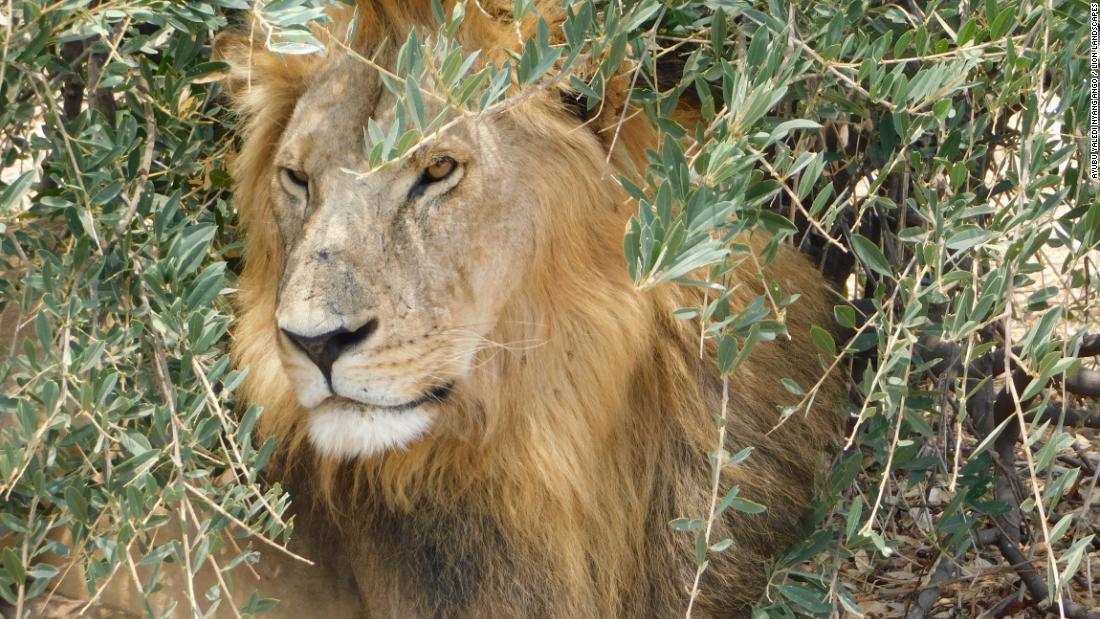Historically, the tribe would track and kill lions that posed a threat to their community — but with populations of the big cat dwindling, a group of conservationists are now helping Barabaig warriors to protect the lions they once hunted.
“These kinds of instances are sadly not that uncommon,” says Dickman. “Particularly in Southern Tanzania there’s a very real risk of living alongside these animals. They pose a genuine threat to people and to their safety.”
According to Dickman there are around 800 lions in the wider Ruaha landscape, though it’s hard to give accurate numbers. All the tribal communities who call the region home struggle to maintain balance with the lions they live alongside.
Lion Defenders
“If there’s been an attack on cattle, the Barabaig will go and start a lion hunt, but it’s not just about retaliation,” explains Dickman. She says that the warrior who throws the first spear to strike the lion gets to take a paw as proof of the kill. “Girls will pay them lots of attention and they will get gifts of cattle” — an important economic and cultural asset in the Barabaig community says Dickman.
“The Lion Defenders program has been built around the idea of what it really means to be a warrior,” says Dickman. “To be a warrior is to protect your community, to be someone they can rely on, to be someone with high status.”
There are 18 Lion Defenders currently in the program, usually young men between 18 and 20 years old. Stephano Asecheka, who is from the Barabaig tribe, acts as an intermediary between these young men and the community. “Their task is to survey the border areas early in the morning for traces and tracks of lions so as to inform herders of the safest grazing areas,” explains Asecheka.
“The challenges Lion Defenders face is with some people in the community who are not in support of the project,” he says. “(They) refuse to give correct information of the lion hunters and even threaten them (the Lion Defenders) to be disowned by the community for destroying the tradition.”
According to Asecheka, taking tribespeople on tours into Ruaha National Park endears the community to the lions and helps them understand the value of the animals as a tourist draw that can boost the local economy. “They feel a sense of ownership and get to understand the right reasons to why we are protecting the lions,” he explains.
He is hopeful that lion populations will increase, and that communities will adapt by building stronger houses and livestock enclosures. Lion Landscapes helps to build fortified enclosures.
Asecheka says fewer lions are being killed, thanks to the project. “We still have men who hunt lions outside the reserve,” he continues. “But such cases are also falling with the awareness being created by the project.”
Cooperative conservation
The key to Lion Landscapes’ conservation work is changing the Barabaig perception of lions, says Dickman. “Our work is centered around trying to empower local communities so that they see a benefit from conservation,” she explains.
Groups of four villages compete to score the most points each quarter, with the winner receiving around $2,000 worth of healthcare, veterinary medicine, and education aid, and the other villages receiving smaller amounts. Lion Landscapes says the initiative generates valuable wildlife data, trains local people in conservation techniques, and by providing benefits from wildlife being on their land, has led to some villages banning lion hunting.
Instead of associating the big cats with loss of cattle, wealth, and life, Dickman says the Barabaig now connect the animals with access to good healthcare, education, and subsidized school meals.
Through its combined programs, Dickman says that lion killings have decreased by over 70% in the core area where Lion Landscapes works. “The communities that we work with have truly come on board as partners,” she says.

